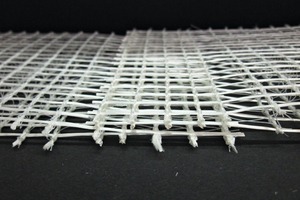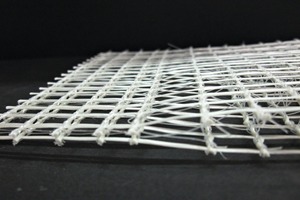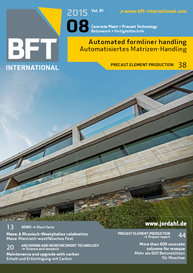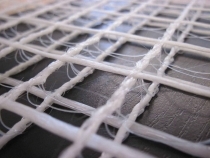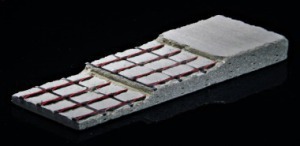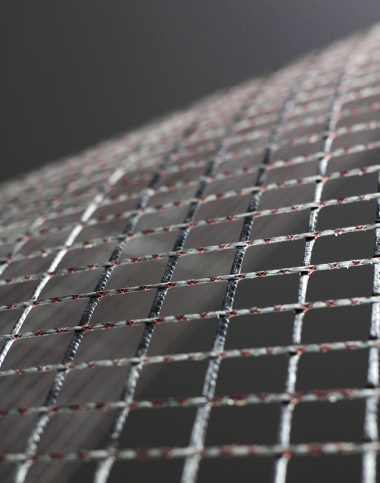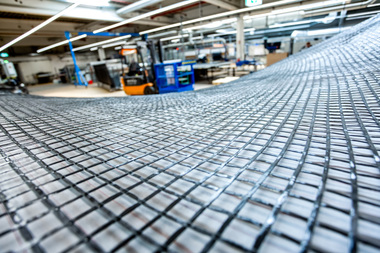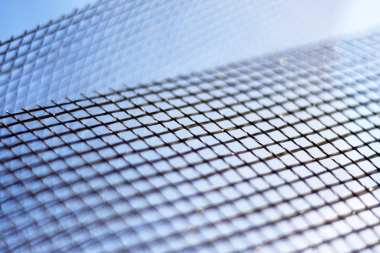3D high-performance grids for textile-reinforced concrete
Textil reinforced concrete, reinforced with grid structures made of AR glass or carbon, is a new, innovative composite material. Resistance to corrosion together with high strength is the great advantage of the material. This allows for the positioning near the surface, thus the production of particularly thin and lightweight precast concrete elements or reinforcements.
Three-dimensional textile reinforcements for concrete are 3D biaxial spacer fabrics consisting of two biaxial grids of alkali-resistant AR glass or carbon which are rigidly connected with each other by pile threads. The reinforcements are available in two- and three-dimensional design either as sheet or reel material; the distance of the grid and density of the pile threads is variable.
Problem of overlapping solved for connections
With the latest innovation, that is unique all over the world according to information given by the manufacturer, V. Fraas Solutions in Textiles have found a textile technological solution to the problem of overlapping when connecting three-dimensional reinforcement made of high-performance fibers. So far, 3D biaxial grids were connected joint to joint with a 2D reinforcement on top and bottom used as lapping. This resulted in the adverse effect of thicker pieces in the length of the overlapping as well as additional material expenditure owing to the 2D reinforcement inserted at the junction points.
The new high-performance grids of V. Fraas, however, are narrower at the right and left ends, as the 3D textile fabrics are intersecting there. In this way, the 3D structures can be continued in endless sheets, without any thickening of the reinforcement layer at the point of overlapping. The reinforcement layers can individually be assembled on top of each other, according to the customer requirement, regarding the length of the narrowed overlapping.
Wide range of applications
The range of application and use of textile-reinforced concrete is versatile – whether for structural strengthening and repair or in new construction. Already now, the slender composite material has demonstrated its exceptional material characteristics in numerous reference projects – thus, for example, for repairing of a sugar storage silo in Uelzen/Germany, for a new building of Alphabeton AG in Switzerland with 3D textile reinforcement made of carbon used for the concrete façade panels or for the façade of the Institute of Building Materials Science at TU Dresden.

